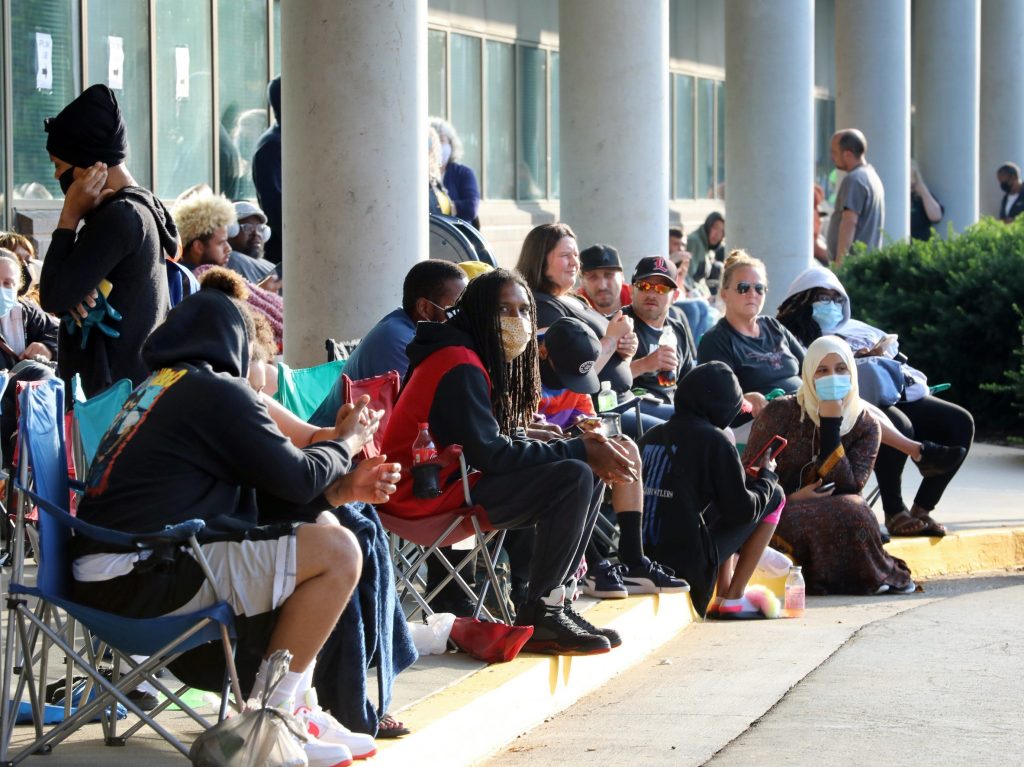
John Sommers II/Getty Images
- The unemployment rate for Black Americans dropped by 1.0 percentage point in July.
- But that's in part because more Black Americans left the labor force altogether.
- One expert said that it's a "mystery" why labor force participation dropped.
- See more stories on Insider's business page.
July's jobs report brought more jobs than expected, with the US adding 943,000 nonfarm payrolls. The unemployment rate also dropped down to 5.4%, a bigger dip than anticipated.
All told, the report shows signs of more robust recovery. In fact, Insider's Ben Winck and Andy Kiersz report that July's numbers were so good that they actually shaved four months off of economic recovery.
Despite what looks like a heartening report, Black Americans are still falling behind – they were increasingly no longer looking for work or employed in July.
In July, the unemployment rates for Black workers and Hispanic or Latinx workers dropped. Black unemployment dropped by 1.0 percentage point, while Hispanic or Latinx unemployment dropped by 0.8 percentage points. Those figures are higher than the drop in white unemployment, which declined by just 0.4 percentage points, as seen in the following chart:
Even so, unemployment rates are still elevated for Black and Hispanic or Latinx workers. As seen in the chart, these rates are also still higher than pre-pandemic rates.
Dr. William Spriggs, the chief economist of the AFL-CIO, tweeted that "though the Black unemployment rate fell because of people dropping out of the labor force, the Black unemployment rate at 8.2% was less than the unemployment rate for High School dropouts 9.5%."
Data for Asian Americans only goes back until 2003, not as far back as the other race and ethnicity groups noted above. The unemployment rate for Asian Americans did drop from 5.8% in June to 5.3% in July.
In June, the unemployment rate for Black Americans actually increased, even as the country added a revised 938,000 jobs. It showed how workers of color - along with women - continued to be left out as recovery picks up.
But the drops in unemployment rates have important caveats. Nick Bunker, economic research director at Indeed, told Insider the drop in Black unemployment was driven in part by Black workers leaving the labor force altogether - meaning that they weren't counted as unemployed.
"That's one of the situations where the unemployment rate falls for a bad reason," Bunker said. "It wasn't a decline in unemployment because more people got jobs. So, hopefully that's a one-month aberration."
The following chart highlights the labor force participation rate by race and ethnicity since 2001:
The Black labor force participation rate dropped by 0.8 percentage points to 60.8% in July, while labor force participation rates ticked up for white and Hispanic or Latinx Americans. In June, a net total of 240,000 Black Americans joined the labor force. However, 249,000 exited in July. The labor force participation rate for white Americans was 61.6% in July, and it was 65.7% for Hispanic or Latinx Americans.
"It's a little bit of a mystery as to what happened in July, in particular," Jasmine Tucker, the director of research at the National Women's Law Center, told Insider. "There's not really a big seasonal change that's happening and there's not something that's tied to school."
Those labor force drop outs will likely only exacerbate pre-existing inequities for jobless workers. Tucker said the numbers underscore the need for policy changes like funding childcare, raising the minimum wage, and paycheck fairness.
"The cost of not doing anything or not doing enough right now is way higher than doing too much," she said.
